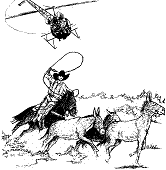Vertebrate Pest Conference: Proceedings

Vertebrate Pest Conference Proceedings: 11th (1984)
Date of this Version
September 1984
Document Type
Article
Abstract
Radio telemetry and capture-recapture techniques were used to evaluate the hazards to golden-mantled ground squirrels ( Spermophilus lateralis) from hand baiting with 0.5% strychnine-treated for western pocket gophers (Thomomys mazama) on conifer plantations in eastern Oregon. Toxicology data were collected on field-killed and caged ground squirrels and on caged mink (Mustela vison, great horned owls (Bubo virginianus), and red-tailed hawks (Buteo jamaicensis). Ground squirrel populations were reduced 50% to 75% following underground baiting for pocket gophers. Maximum amount of strychnine found in cheek pouches and carcass of a field-killed golden-mantled ground squirrel was 2.88 rag. Mean amount of strychnine in carcasses was 0.35 mg; almost all occurred in the gut. The estimated LD50 for mink was 0.6 mg/kg. The lowest lethal dose for great horned owls and red-tailed hawks was 7.7 mg/kg and 10.2 mg/kg, respectively. The LD50 for owls and hawks was not determined. Long-term effects on golden-mantled ground squirrel populations and secondary hazard potential to owls and hawks were judged to be minimal. Wild mustelids as large as mink could be adversely affected by consuming the gut content of strychnine-killed golden-mantled ground squirrels.

